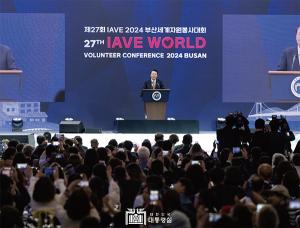 |
The government is in the process of launching a task force to collect opinions due to the seriousness of the low birth rate and aging population, so it is worth considering the opinions of Sohn Hae-sung aka Ganam. Although tens of trillions of won in financial support have been provided every year, there is little effect, so it is necessary to completely revise and reexamine the birth promotion policy. I believe that policy makers misunderstand the causes of low fertility, so it is difficult to expect any prescription to be effective, and they should practice effective utilization of incentive systems. Most of the financial support is based on the premise of post-marital childbearing, such as pregnancy, childbirth, and childcare, which is passive and has a very low correlation with fertility.I strongly advocate for pre-marital support policies to broaden the range of birth families and customize support for birth families, which can actually improve the fertility rate. I think that policies should be geared towards increasing marriage and encouraging people to have more than one or two children, especially social environments where couples who met in school can marry without breaking up are very important, and employment and housing should be studied simultaneously.
 |
Institutionalized work and childbearing incentives should be introduced for newly married couples. There should be institutional (legal) support for recently married couples to work. (Marriage should be enforced as strongly as the duty of national defense). Birth is an important resource for a country’s future and should be rewarded accordingly. First. Give newlyweds extra points for employment. (Same for men and women.) Give extra points in the appointment and entrance examinations of civil servants, public companies, and private companies (including large and small businesses). (For example, 2-3 points.) Second. Additional points are given for childbirth based on the number of children after marriage. For example, the number of children after appointment and employment is given extra points and prioritized for promotion (e.g., 2-3 points for one child, 4-6 points for two children). In addition, senior government officials and company executives who can afford it are encouraged to have two or three children. If a non-regular employee has two or three children, convert them to a regular employee. Third, provide incentives for childbirth. Provide childbirth incentives to new mothers and elderly parents in the form of a certain amount of money based on the number of children in childcare. (Example: 300,000 to 500,000 per child per month). This will greatly help solve the problem of elderly welfare, and it will also solve the problem of housing by establishing the traditional Korean family system, as parents and children are raised together at home. The incentive system (bonus points) should be widely used for employment, as well as for home purchase, childcare, and education. The number of extra points should be determined by gathering opinions from experts in various fields. (Increasing the volume of points can lead to 100% success.) The advantage of the incentive system is that it can be effective even without financial support from the state. Economic support from the state is cash, which is volatile and one-time, but incentives are non-volatile, continuous, and customized support, unlike cash. Maternity support should be determined with broad input from multiple professionals.
 |
For housing in the early years of marriage, we recommend temporary living arrangements with both parents while there is space available. If couples utilize the incentives I advocate, they can be happily self-sufficient in their own home with two or three children within five or seven years of marriage (depending on location and income). Without breakthrough measures to address the declining birthrate and aging society, we will not be able to create jobs for young people and improve the lives of the elderly, and poverty and suicide rates will remain among the highest in the world. Korea’s problems of (1) jobs for the young, (2) low birthrate, and (3) aging population need to be examined under one umbrella, and it is necessary to introduce employment and childbirth incentives as a national system and provide legal support to achieve the desired results.
지윤석 기자 jsong_ps13@naver.com







